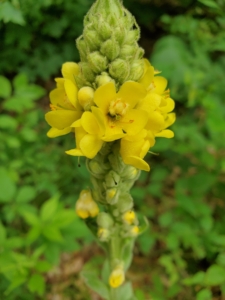Experiencing four distinct seasons is a powerful way to tell time. Each season brings with it an element of life and death and teaches us to embrace change. Many of us think of the seasons in terms of what we wear or how the weather affects our commute; however, how many of us stop to think about how the seasons affect our diet and medicines?
Increasingly, we buy our medicines and our food from grocery stores. When we walk into a store and find all that we need, it becomes difficult to notice the true impact of the seasons on what we eat and how we feel. As science progresses, technology continues to fuel the advancement of hybrid seeds resistant to Mother Nature’s woes. Technology supports farming machinery to achieve greater yields of large-scale crops, ensuring the things we enjoy consuming are constantly available on store shelves. The convenience of shopping disconnects us from the spirit of our food, and ultimately distracts us from the stories that Mother Nature is telling us, especially through her gifts of the changing seasons.
When does winter truly end? How long is spring, really? What if we let go of the idea that the answers to these questions come from a calendar, and instead, turn our collective gaze toward nature? Consider that winter ends when the Red Squirrel awakens and begins to nibble Maple Tree’s stems, signalling the maple sap to begin to flow. Spring arrives when coltsfoot pops out its mysterious yellow flower before its signature leaves arrive. Trilliums and trout lilies tell us how long we have until spring disappears. And as soon as it gets too warm, we learn that summer has arrived. Raspberries emerge telling us summer is ending and it is time to load up on fat stores with Wintergreen signalling our last chance at berries before the deep snow arrives. All these plants are also gifts of Mother Nature and were once received as wild foods and wild medicines, by human beings.
When one remembers what to eat, in what season, and by what is available in nature, then one also begins to see the changes in what Mother Nature can offer as weather patterns shift. To truly understand the weather and the climate, one must return to nature. When one grows a garden and watches peas whither in the early spring heat, or the squash shrivel due to drought, or apple blossoms bloom too early, only to be killed by frost; when one mourns another season without fruit, one can no longer remove oneself from Mother Nature’s narrative.
As someone who gardens and forages, I feel a deep connection to the seasons and all their changes. I may not fully understand the magnitude of the impact of the seasons, but I feel the struggles of Mother Nature; she reminds me of my connection to her well-being. For me, the way I understand how I can be of service to healing the Earth means to first to live with and through Mother Nature’s cycles; to experience her cycles with all my senses; and to accept that to re-learn her ways, I must get away from the fluorescent lights and the straight, cropped garden rows, and bear witness to the messages found throughout the forest landscape.
I invite you to choose to get familiar with food and medicines that are in season and to embrace the cycle of seasonal changes. Then, and only then, can we truly remember how to love Mother Nature and steward the land in ways that can help us heal the planet and humanity.

Edible wild evening primrose
By Tawny Stowe
Photo Credits:
Edible wild evening primrose photo: Tawny Stowe
Header Photo: Karl Heinz Muller, Unsplash


















